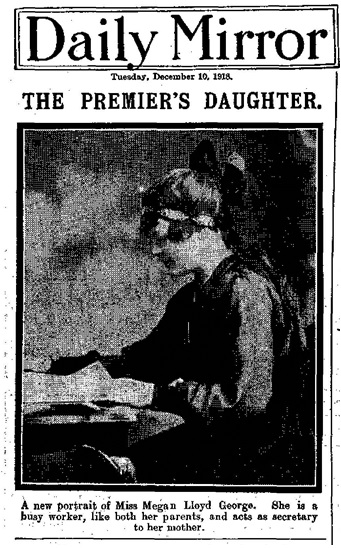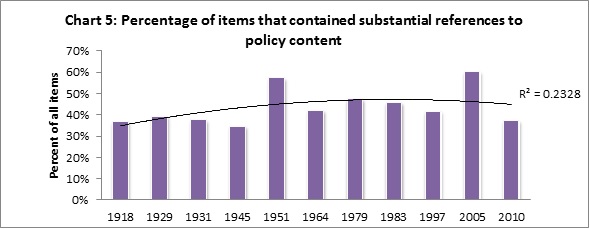Politicians and ‘Personalisation’ in perspective
Recent events have put a new spin on the old saying: ‘if you can’t stand the heat, get out of the kitchen’. First, Ed Miliband was ridiculed for being photographed in an austere kitchen that turned out to be his spare one. Then David Cameron made a kitchen-based confession to the BBC that he would not stand for a third term in office. This led to speculation that the conviviality of his surroundings made him more candid than he intended. In both staged media events, the leaders’ wives featured prominently.
Some might argue both instances reveal a lot about what is wrong with contemporary political communication. They show how politicians attempt to use their personal relationships and private lives to polish their public credentials. They reveal the readiness with which journalists inflate seemingly ephemeral issues to deride and distract. And in the midst of these kitchen-sink dramas, serious debate about substantive policy issues gets washed down the plug-hole.
But are such tendencies entirely new? A recently completed study of national press coverage of General Elections since 1918, conducted by the Communication Research Centre, provides some interesting historical perspective.
About the study
For every decade since the First World War, we identified the election that saw the largest political swing. In each of these campaigns, we quantified the extent to which news reports of the election referred to various personal qualities of political candidates. We then tracked the relative prominence of these references over time.
Getting personal?
The charts below compare the percentage of items in each election that contained references to the personal qualities of politicians. The charts include trend lines and an accompanying statistic. The closer that figure is to one, the stronger the trend.
We found that references to the ‘competence/ experience’ of politicians reveal a consistent upward trend over the decades, particularly since the 1983 General Election.
In contrast, there was no evident pattern of change in relation to references to the personal integrity of politicians, which seem to have been episodically news-worthy across the century.
References to the ‘personality/ personal qualities’ of politicians show a fairly strong upward trend in coverage over time, but have been consistently less prominent than other personalisation themes:
Coverage of politicians’ personal lives shows a more complex pattern, declining in the immediate post WW2 period, then increasing to a peak in 1997 and levelling off in the period since. But overall, this matter has periodically attracted high levels of news coverage across the century.
Continuity and Change
These patterns reveal patterns of continuity and change in personalisation in General Election news reporting. References to the private credentials of politicians have increased, albeit not as greatly as some might suppose. However, these have not displaced coverage of their public credibility. Of particular interest here is the lack of any consistent pattern regarding the political integrity and standards of politicians. There are some recent spikes in 1997 and 2005 (reflecting debates respectively about political sleaze and the war in Iraq), but these levels are not unprecedented. For example, there were frequent references made to these matters in 1945 (stimulated to a large extent by critical press commentary about Churchill’s use of his war record to advance his partisan political interests).
And what about policies?
Assertions about the increased ‘Personalisation’ in political coverage are often used to support complaints that electoral debate has become ‘hollowed out’ over recent times. To assess whether this is the case, we noted how many news items contained any substantial reference to the policies of any of the political contenders (i.e. discussion occupied at least 20 percent of an item). Chart 5 shows significant election-by-election variation, and a couple of outlying campaigns (1951 and 2005), but also that there never seems to have been a golden era when policy-enriched coverage dominated media debate.
Of course, this does not mean that the style of communicating the ‘process’ of the campaign has not changed. For example, much coverage before World War 2 involved dry and descriptive constituency profiling, far removed from the more analytical and judgemental commentary we are familiar with today. Nevertheless, editorial commentary in distant eras could still pack a potent political punch. Take for example the following attack on a leading politician of the day:
‘You are invited to vote blindly and on false pretences for the dictatorship of a man who has deserted every cause he ever professed, betrayed the friends who have served him, whose name is a synonym for plots and ambuscades and political chicane, whose word is held so slight a thing that it is disregarded, whose weapon is cunning and whose ways are the underground burrowings of duplicity, who is distrusted by every party… execrated by the organised democracy he has deserted and now insults, and whose motive is an insatiable ambition to play the part of Napoleon in a militarised world’
The year? 1918. The politician? David Lloyd George.
_____________________________________________________________________________________________
Notes: The study was conducted by Deacon and Harmer and was funded by the Leverhulme Trust (Grant Reference: RPG-2012-782). The newspapers selected for analysis were: The Times, the (Manchester) Guardian, the Daily Mail, the Daily Express, the Daily Mirror and the Daily Herald/ Sun. The content analysis coded all election related content on (1) the front page (or the functional equivalent, when newspapers used their front pages for classified advertising), (2) the next main domestic news page, (3) the pages containing and facing the paper’s leader editorial. The analysis of the eleven elections involved thematic coding of 5468 items.





